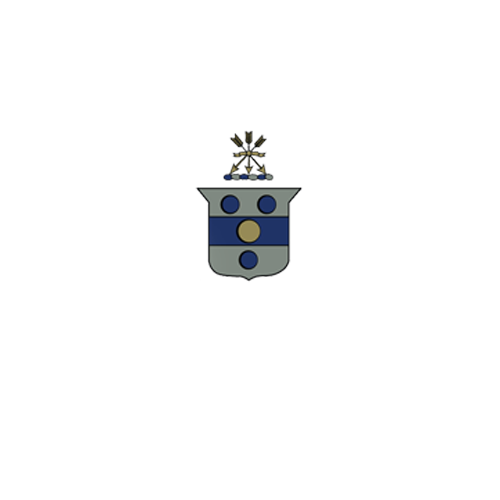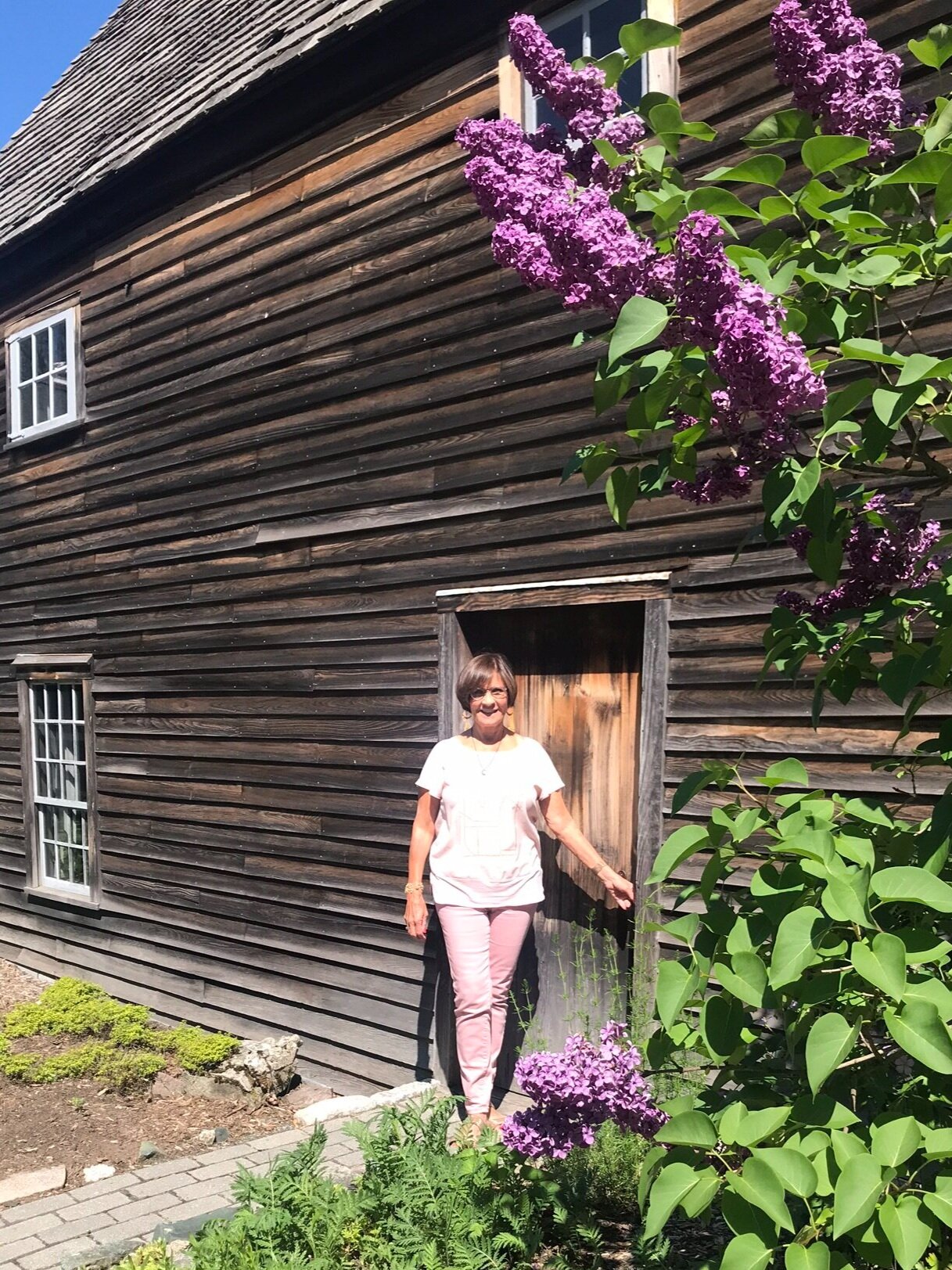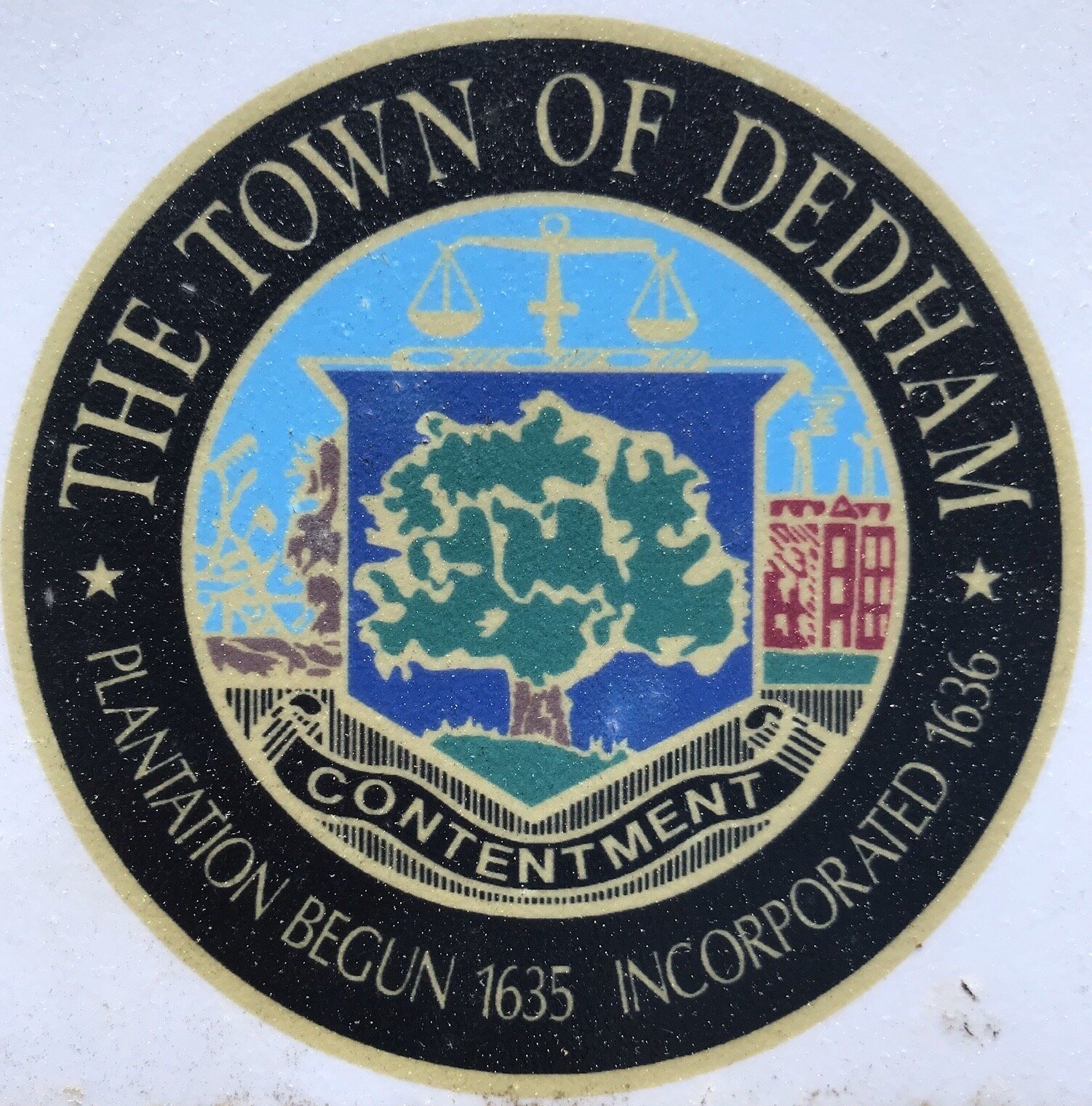Building The 1637 Fairbanks House: The Oldest Timber-Frame House in North America
The Fairbanks House https://fairbankshouse.org/ is the oldest frame house still standing in North America. It was built by Jonathan and Grace (Smith) Fairbanks with their six children when they immigrated from Sowerby, West Yorkshire, England, to the Massachusetts Bay Colony. It was a grand house for its time and was erected the first full year that the settlers were on the land known as Dedham, Massachusetts. In 1637, it must have been quite impressive, because after eleven years, it was still ranked the ninth most valuable house in Dedham. Jonathan was financially in the top third of the seventy-two tax paying proprietors based on country rates or taxes.
The Beginning
Map Courtesy of Dedham Historical Society and Museum
Dedham was granted land by the Massachusetts Bay Colony General Court in September of 1635. Thirty lots were divided among the first proprietors on August 18, 1636. They realized they needed more land for others who wished to settle with them. September of the same year, they returned to the General Court to petition for an extension. With their second grant, Dedham plantation totaled 200 square acres, and the town was incorporated.
Settlers were building houses as early as fall of 1636 in this inland town at the great bend of the Charles River. Jonathan Fairbanks was the first on the waiting list for the second thirty allotments.
Rules for building and using trees were established before the men started to construct homes. Conservation of trees was an issue. England was running out of trees. These men knew they had to protect the town’s resources. The landowner could clear and use the trees on his eight to twelve acres upland lot and three to four acres swamp. If he needed more lumber, he had to request it from the town common land, receive a license, and tag the trees in some way, often by a brand. There were rules about the type and size of trees that could be taken, where it could be felled, and how long a downed trees could remain on common land.
By November 1636, Nicholas Phillips and Ezekiel Holliman were fined for felling and using unlicensed trees from common land. Ezekiel was also fined for using the lumber for clapboards.
The men settling early helped each other build their houses. Most were single story homes with two rooms and a garret or loft., A chimney at one end of the house provided warmth for the whole house and a place to cook. The Fairbanks House would be much larger.
A Lot for the Fairbanks House
Original Grants Dedham Village early 1600’s by E. Worthington August 1936 Courtesy of Dedham Historical Society and Museum
The second thirty lots surveyed and staked were available by March 1636/37. On March 23, Jonathan Fairbanks was presented at the town meeting and was accepted as the first proprietor of the second allotment. He was given twelve acres upland on the east side of town and four acres of swamp. His lot was between John Rogers, the minister from England called “Roaring Rogers, ” and Timothy Dalton. Fairbanks’s lot was situated between the East Meadows and the Little River on the west. His lot was near Wigwam Plains, Wigwam Swamp and Wigwam Pond, where the indigenous people had an encampment.
The town mandated that anyone receiving a lot at that time must reside in Dedham by November 1637. The Fairbanks family started clearing their land for a house, reserving the best lumber for the house and the other for fencing and firewood. They cut down all trees on the lot. Forest trees were not suitable for shade or ornament in a door yard, an area usually fenced around the front of the house. They wouldn’t bother removing stumps, except for the area anticipated for the house.
Houses were oriented to face the south, so doors and window opened in the protected direction. The north side was bitter cold even without openings. The years between 1645-1715 are now known as the New England “Little Ice Age.” https://www.newenglandhistoricalsociety.com/six-ways-little-ice-age-made-history/
The Plan for the Fairbanks House
The Fairbanks House first floor plans: Original house outlined in blue and lean to outlined in green
The Fairbanks family didn’t build their own home. The construction indicates it was built by a professional. They chose a house similar to those built near London, in the East Anglia timber structure style that was popular south of the Fairbanks’s home in England.
The Fairbanks House was a two-over-two construction. Downstairs, there was a large hall or kitchen with a second smaller room that served both as a parlor for entertaining and a bedroom for the parents. Above were two rooms. The hall chamber, over the kitchen, was not heated and was used for cold storage and a workroom in the winter. The second upper room was the parlor chamber had a hearth. This was bedroom for the six children. There was a garret, or unfinished attic, over the upper rooms. Initially a ladder was used to go from the first floor to the upper floors, later steep narrow stairs coiled around the chimney.
The Fairbanks House Chimney
To start the construction, a large rectangular fireplace was built. It was ten feet by eight feet at the base and spanned almost the entire width of the house. It was made of 40,000 bricks of soft pink or rose material that would not stand up to the elements, but the fireplace was entirely enclosed in the house, except a small portion on the roof. The brick was either brought from England or another town already settled in the Colonies. There was a brick striker, Rich Yong, welcomed into Dedham, August 1638, but this was late for the Fairbanks House. (Page 48 Dedham Town Records) Perhaps a mason was hired from Boston.
The bricks were probably brought to Dedham on the Charles River. They were laid using the river clay for mortar. The bricks held and radiated heat to warm the house during the cold New England nights. The ceilings were kept low to preserve heat. This also decreased the amount of lumber needed to build. The parlor ceiling was only six feet high.
There were three hearths. The first hearth, in the hall, was six feet wide by four feet tall. Kitchen hearths were large, so several fires could be made at the same time for the preparation of different foods at varying temperatures. The second-smaller, hearth was in the parlor. The third was in the parlor chamber upstairs. It was quite unusual for the children’s room to have a hearth.
Note: The original hall hearth was bricked in later to make an indoor oven. The original oven was probably a clay dome outside the house. Picture taken at The Fairbanks House at Dedham, Massachusetts by Sharmin Fairbanks McKenny
Dedham Lumber for The Fairbanks House
Saw pits were established early in the Dedham woods. One saw pit was described in the Dedham Town Records as twelve feet long, four and a half feet wide, and five feet deep. The saw was started in the end of the wood. The wood was then moved over the saw pit, so one man stood below the log and the other above. In this fashion, they used a long pit saw to square large tree trunks and saw boards prior to the advent of water-powered saw mills introduced in the 1650’s.
The oldest timber in the Fairbanks house was the oaken summer beam that spanned from the west wall to the chimney in the middle of the hall. It was felled in 1637 according to dendro-chronology, the year Fairbanks received his lot. The numerals 1636 were placed on the house after it became a museum, but before there was proof of dating. It and the other frame lumber were oak, cut and used green. The green timbers were held together by tongue and grove joints and wooden pegs called tree nails or trunnels. As the green wood dried, it shrank and bound together to make a lasting frame. No iron nails were used in the frame. Iron nails rusted and loosened over time. "Dated Buildings in Massachusetts".
Potential Builders of The Fairbanks House
As lumber was prepared, Jonathan needed to find a carpenter. There were many carpenters in Boston, but much building was taking place there. More money was available for builders who worked in Boston. There were three carpenters in Dedham who might have built the Fairbanks House.
Boston College Reconstruction of Model of
The Fairbanks house
The first builder in Dedham was Joseph Kingsbury. His brother, John, was involved with the second petition for Dedham land. Joseph Kingsbury is mentioned in the town records July 1637. The next carpenter in town was one of three Fisher brothers who followed Reverend John Allin to town. Anthony Fisher was on the committee to ‘fabricate’ or design the meeting house in November of 1637. Thomas Fisher was commissioned to build the Dedham meeting house or church. John Roper, Senior, was the third known builder in Dedham. He joined the town in August of 1637. A fourth carpenter was Thomas Bayes. He didn’t come until April 1638, after the Fairbanks House was built. Joseph Kingsbury or John Roper and his sons are, perhaps, the most probable builders of the Fairbanks House. Later, the Ropers went to Lancaster, Massachusetts, as early settlers in John Prescott’s town, a friend of the Fairbanks Family.
What Roof Material for The Fairbanks House?
It is controversial whether the first roof was thatched straw from the coarse grasses of the vast meadows or wood shingles. It is documented, that thatch was used on the first meeting house. Thatch was also used widely in England. The steep pitch of the Fairbanks House roof indicates it was thatch or slate tiles. A thatch or tile roof needed a steep slope to allow the snow to slide off. Snow would melt through the straw or become too heavy on a tile roof. It is believed that a thatch roof was used for a short time. Oak and cedar shingle roofs were common in later years.
Grass lands by Wigwam Pond- Dedham, Massachusetts
Thatch roof in the making at Plimoth Plantation
Insulation and Siding Against the Little Ice Age in 17th Century New England
Insulation
Wattle and daub seen at Plimoth Plantation
In both England and New England the standard wall construction in the 1600’s, was wattle and daub. Wattle was willows or pointed slats fit between the building studs with horizontal withes or willows woven through them. Daub was a clay and straw mixture that was like cement when it dried. In England, they mixed in or covered this with lime. In New England, lime was scarce, and the winters wore away the insulation when not protected. Clapboards were used as house siding to protect the wattle and daub insulation.
The Fairbanks House is one of the few places in England or New England that has an original wattle and daub wall of that period. It was on an outer wall of the original house, but was soon protected by the addition of a lean to.
Siding
Early clapboarding as seen at Plimoth Plantation
When the earliest men were building houses in Dedham, clapboards, overlapping board siding, were banned. Probably because of the extensive use of wood. Ezekiel Holliman was fined in November 1636 for using clapboards on his house. He was reimbursed his fine when the townsmen realized that the houses needed more protection from the severe winters. They also extended permission to use clapboards until May of 1637. They prolonged it again until June the same year. Finally clapboards were permitted, all together, after June 1638. They even granted pines from the common swamps for making clapboards for those who didn’t have them on their own land.
Original rose head hand wrought nail found on the cellar door at The Fairbanks House
Clapboards on the Fairbanks house were cedar on the north and south sides, because of their resistance to infestation. On the east and west sides they used oak. It was sturdier and resisted the inclement weather from those directions. They were held in place by hand-wrought nails according to Abbott Lowell Cummings, a respected New England architectural historian. You can see the hand-wrought or rose nails in the door of the house cellar if you visit the house today.
Doors for The Fairbanks House
A door opened to the south into the door yard. It was originally located to the west side of the chimney-bay. The latch of the door was metal fittings. Another door opened to the back or north side of the house and was located at the west end of the north wall.
Front or South door of The Fairbanks House
The original stone well at The Fairbanks House was at this location but was about a foot tall. It had a well sweep to lift water from the well.
Early Well for The Fairbanks House
Six steps outside the front door was a fresh water well. It was dug early to provide the only water for the house. Water was found about three feet deep at that time. A one foot rock wall was built around it. A well sweep was erected to make it easier to raise the water. This was done by erecting a tall pole to act as a fulcrum for another long pole with a rope tied to one end and a bucket tied to the rope. The bucket was lowered into the well and brought up full of fresh water.
Windows Set the Fairbanks House Apart
The Fairbanks house, unlike many houses, had glass windows. Other early houses used oiled paper. The Fairbanks either brought or requested the windows from England. They were made with diamond panes of blown glass, three and three-quarters inches across. These were set in grooved lead called cames. Multiple panes were placed together in a frame to make the window. The original windows are displayed inside The Fairbanks House today.
There were two windows on the first floor, one in the kitchen and one in the parlor. There were two large and one smaller window on the second floor. The two larger windows were in each of the rooms (chambers) and the smaller was in the middle in the chimney-bay. All the larger window were twenty eight inches wide and twenty inches high. The windows swung outward from hinges on one side. The children had a window in their room, which was a luxury for that time.
Original window from The Fairbanks House, now protected inside the house for you to see on your visit.
The windows were valuable for light. There wasn’t enough fat in New England to produce candles, so candles had to be imported. Windows became a criteria for taxation.
Finishing Touches for The Fairbanks House
By town law, the Fairbanks family had to inhabit their land by November 1637, seven months from the time they were given their lot. At least parts of the house were probably complete enough for them to occupy it. Some of the wood in the house was dated to 1641. This could be replacement wood, or finishing pieces. They used oak to build the frame, but they used pine for floors, trim, roofing, and wall sheathing. http://fairbankshouse.org/about-history/the-house/
Deep into the Fairbanks House, The Cellars
There were three cellars associated with the house at the time of Jonathan Fairbanks’s death, found on the inventory of his possessions. One cellar was under the house, called a working cellar. It had vises, a turning lathe, and other small things. The door of the cellar under the house may be the original door with hand-wrought or rose nails. Another cellar held beer vessels, chair, keelers, trays, a cupboard, cheese, beef, and tallow. In a yard cellar, there were vessels filled with cider, a tub with pork, and apples.
The Fairbanks House cellar spans almost the width and length to the end of the original house.
Lean to: An Early Addition to The Fairbanks House
North door into the lean to of The Fairbanks House
The original house had a foot print of sixteen and a half by thirty five feet. Before Jonathan’s death in 1668, a lean to was added. The lean to was a low narrow shed added to the full length of the north side of the house. This room protected the north wall of the house from the winds and cold in winter and was used as a work and storage area. Lean tos were considered common additions to houses at that time. The roof sloped down to cover the lean to and came within a few feet of the ground.
The larger area of the lean to was used for storage of husbandry tools and dairy equipment, while the smaller room next to it contained only grain, peas, hemp, flax, and hops. However, it may have been used for spinning and churning and cheese making early. Abbot Lowell Cummings
Later Additions to the Fairbanks House
A west wing was added later. It may have been another structure that was moved to the side of the original house and incorporated into the house. It was not heated and may have been used for housing workmen. Later, it was enlarged and divided into several bedrooms.
An east wing was added. It was a smaller house that was moved from some part of the land to be incorporated into the original house. This occurred when the descendants of the original family used the house and needed extra room for the extended family.
This Grand Old House
This old home has withstood 383 years. It was built to last forever. Eight generations of the Fairbanks family lived here before it became a monument to the family and history as a museum. It is preserved nearly the way the original family built it, with only the east and west additions added by later generations. There has never been electricity, plumbing, or heating and cooling added to the home. It is a true step back in history to the time of the Fairbanks family in 1637.
The Fairbanks House is still maintained as a museum by the Fairbanks Family in America, Inc. It is on the U.S. National Register of Historic Places and is a U.S. National Historic Landmark. It is considered the oldest wood frame house in North America.
You Can Live the History of The Fairbanks House
You can visit this house at 511 East Street, Dedham, MA 02026, or The Fairbanks House now has a virtual tour of the house on their site https://fairbankshouse.org/ go to “Visit” “Virtual Tour”
The Fairbanks House is also having a Virtual Internet Family Reunion this year. If you are a descendant, I hope you join me at the reunion on August 8, 2020
Thank Yous
The Fairbanks House Dedham, Massachusetts: Thanks to Daniel Neff, the current curator, Tina Blood, President, Debbie Hurtig, docent and board treasurer, Jonathan L Fairbanks, historian, and the many prior curators, board members, and docents who provided much of the information I have shared with you.
Other Resources
Cummings, Abbot Lowell. The Fairbanks House: A History of the Oldest Timber-Frame Building in New England. New England Historic Genealogical Society, 2002
Dedham Historical Society and Museum, Executive Director Johanna McBrien
The Early records of the town of Dedham, Massachusetts, 1636-1659 https://archive.org/details/earlyrecordsofto03hill/page/28/mode/2up
Three Hearths by Abbot Lowell Cummings
https://hne-rs.s3.amazonaws.com/filestore/1/3/0/5/6_afe655de97c49f1/13056_3c58ab52f39157a.pdf
https://www.newenglandhistoricalsociety.com/six-ways-little-ice-age-made-history/






















